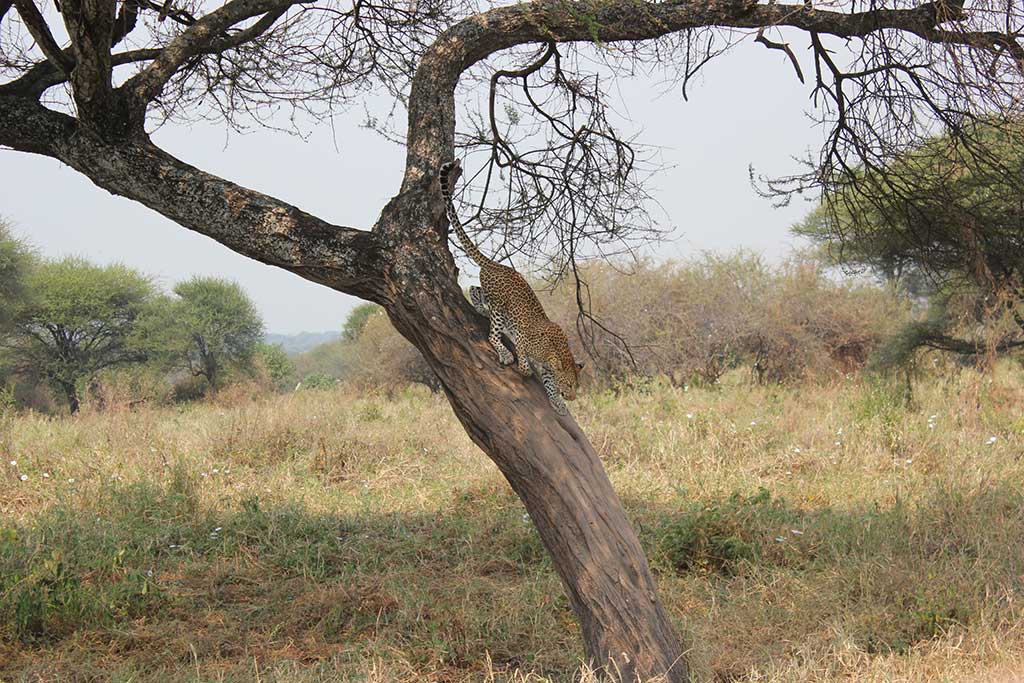by Hélène Roulston
My Childhood Fascination with Africa and Planning Our Family Safari
I have had a fascination with Africa – various parts of it – since childhood. I have relatives who lived in French West Africa as part of the colonial administration. My mother went to visit them when she was just 15 (in the 1950s, so quite an adventure). I had friends who had gone and lived in Burkina Faso, Côte d’Ivoire, Togo as part of Canada World Youth whom I envied tremendously. Finally, after years of planning and saving, it was happening. And I had decided to make it a family trip. My partner (Jeff), our two boys (Declan aged 19 and Loïc who would turn 16 during the trip) and myself. And although they were interested, none of them shared my fervent desire to go to Africa, so there was a lot resting on this trip in terms of coming through on the promise of the trip of a lifetime. A promise I had sort of made.
Jeff and I planned together, trying first to figure it out on our own and quickly turning to a travel agent at Talk of the Town Travel to whom I am now very grateful. I personally have a number of destinations on that continent on my “bucket list.” My boys are nature lovers, outdoors, sporty, campers… not fans of big cities and museums. So a safari made perfect sense. That narrowed it down at least a bit. And although I knew someone who had lived in South Africa for three years and done a fair bit of safari travel there, on the offchance this was my only safari, I really wanted the mythical Serengeti to be on the agenda. We decided on Tanzania for a few reasons.
I knew someone who had been there and loved it. I also knew someone who had worked there, who I thought might have advice and insights. One of the appeals for me personally was that English was not the first language, although spoken widely. For me, that was an opportunity, and I started to learn a bit of Swahili as soon as the trip was decided on.
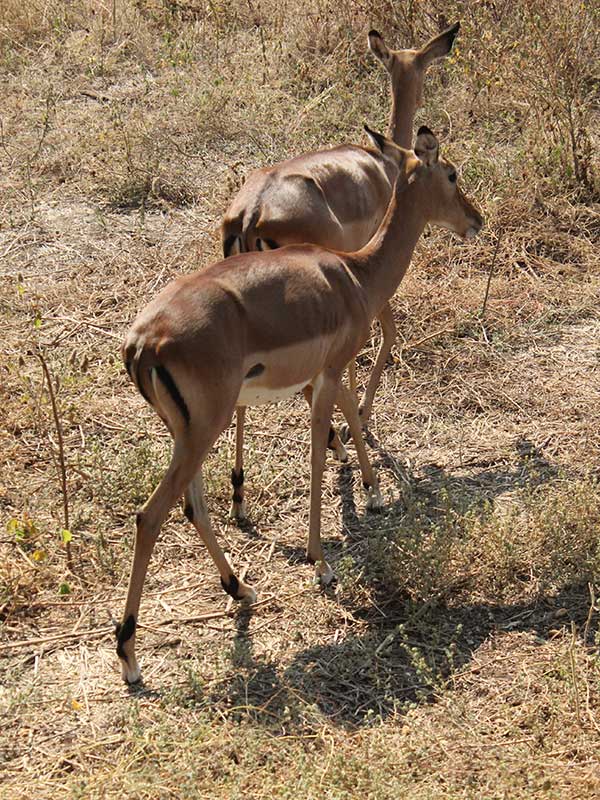
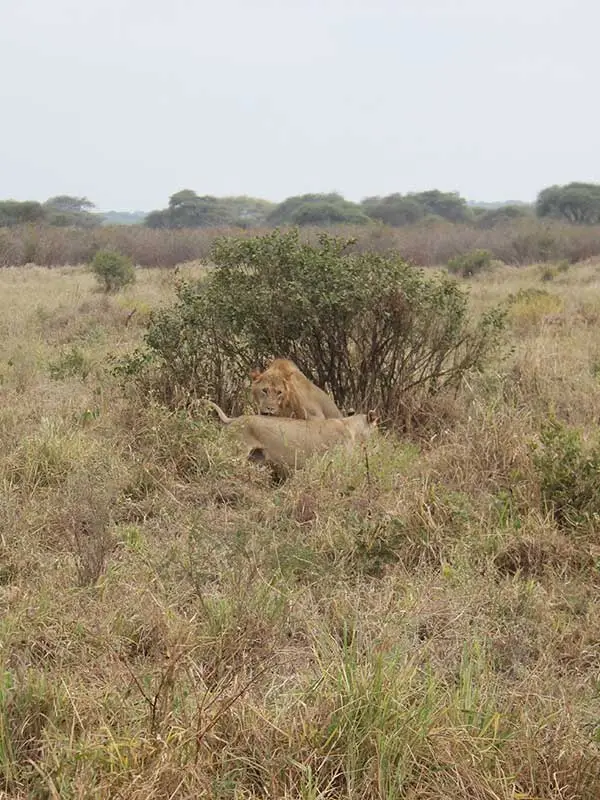
Flying to Tanzania
One of the downsides of choosing Tanzania is that, as a less popular destination, access is not quite as straightforward. It took us three flights to get there: One 14-hour flight flanked by two one-hour flights, which was a bit frustrating, but we made the best of it. (There were in
fact itineraries with better connections, for nearly double the price.) We left our home at 3:00 a.m. local time and arrived at our hotel at 11:00 p.m. local time the next day. Minus 7 hours for the time difference and you get a 37-hour trip.
About 24 hours into this epic journey, we landed at our first African destination: Nairobi, Kenya. We had a 9-hour stopover and had decided that was enough time to make it worthwhile to leave the airport. As the plane landed, fatigue was replaced with excitement that was hard to contain. I am HERE! I can barely believe it. For over 40 years I have dreamed of this. Stepping off the plane onto the tarmac was equally momentous. I was hyper aware of the different sounds, smells, the feel of the air. I was barely a minute into it and already I knew it was worth it. Our bags were checked through to our final destination, so we went through passport control and customs and walked out into the city. We easily found a taxi with a driver willing to tour us around a bit. We had decided ahead of time we would go to a very famous (if touristy) restaurant called Carnivore. On the way there, Jeff whispered to me “we should invite the driver to eat with us.” “Are you sure?” I said, “is that the ‘right’ thing to do”? I suddenly had this sense of being in a completely different culture, where there may be rules I am not aware of. Jeff worries less than me about these things (and more about others), and it turned out our driver was quite happy to join us. The restaurant had a barbecue pit the size of our kitchen at home – I kid you not. It’s in a vast dimly lit area of the restaurant, making it seem a little like a giant campfire. They cook all kinds of meat and come around serving portions of everything from lamb and steak to ostrich and crocodile. Accompanying sauces and salads are on served on a three-tiered serving rack with numerous
bowls and the waiter points out which one goes with the meat being served. Truly delightful.
Well fed, on our drive back to the airport, we started to notice how different this city of 5,000,000 inhabitants was from any at home. There was a lot of construction going on, and the scaffolding was made of tree limbs (or trunks) tied together with twine. There weren’t really sidewalks (mind you, we were on big avenues and highways). At one point, some monkeys crossed the road in front of our car and we shrieked with delight. Monkeys! In a big city! But then there were also essential similarities… a big city, with people in cars, on foot, on bicycles, going about their busy days, thinking about what to have for supper, billboards advertising mobile phone plans and services, schools, places of worship.
A little hitch when we arrived at our final destination, Arusha, Tanzania. One of our bags had not made it. Airport staff seemed sure the missing bags (other travellers were in the same situation) were in Nairobi, but I was not so sure, since there had been three flights they had to
follow us on. As soon as we were through customs, our tour operator guide took things in hand, also confident our bags would arrive the next day. We got to our hotel, which was much more luxurious than we had anticipated, and, to the boys’ utter delight, they had their room and Jeff and I had ours – and they weren’t even close to each other. Full independence for the teens and peace for the parents! We made sure we each had what we needed in spite of missing bags (toothbrush, malaria pills, some clean clothes) and said goodnight. Jeff and I fretted about what we would need to buy if our bag did not come through, trying to remember what was in it, the main thing being a stash of all the medication we might need if any of us got sick. Clothes and personal effects we could probably manage to share what we had and just pick up a few things.
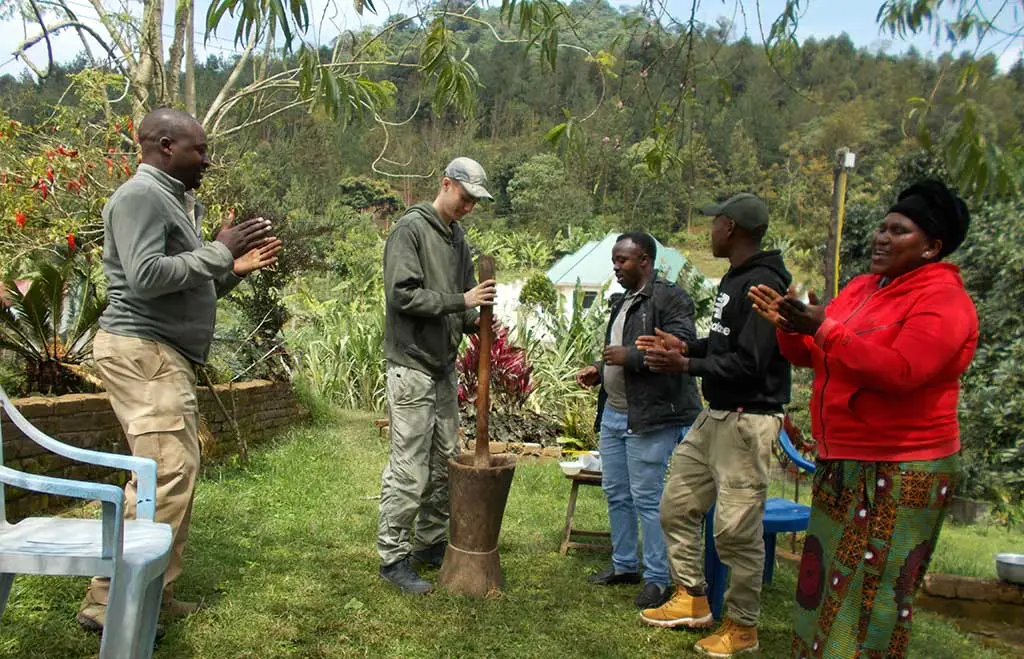
Our First Day: A Spontaneous Town and Market Visit
The next day was ours to do with as we pleased. We had asked for an extra day at this point to recover from jet lag. Against advice, we decided to wander into town on our own. At the first intersection, we were accosted by several locals offering to be our guide for the day. We decided to go with one of them, since we had no map, no internet data and no real clue of where to go. Great decision! He was friendly, well informed and kept other helpful locals at bay. I think he showed us everything there was to see within walking distance, but the most fascinating was the market. It was a jumble of stalls extending as far as the eye could see – I say jumble but it was certainly orderly in its way. Each stall had an owner (or seller) and sold specific things. But mounds of fruit like I had never seen, piles of tiny dried fish, garbage-pail-sized buckets of raw plucked chickens, live chickens, spices, wooden kitchen utensils, clothes, shoes, vegetables I could not have named, all crowded together on either side of narrow pathways where cats scurried along. All under a makeshift ceiling/roof of corrugated metal resting on thin beams. Our guide then took us into a random building, and up some stairs. And more stairs. And more stairs. We probably climbed six flights. And then, lo and behold, a magnificent view of the market from above and Mount Meru, the second highest peak after Kilimanjaro.
At the end of our tour, our guide showed us some artwork he had supposedly painted. Completely gullible, we spent a small fortune on a few paintings of a type we later saw for sale in every tourist shop in the country. Oh well, lesson learned. And we still liked the paintings.
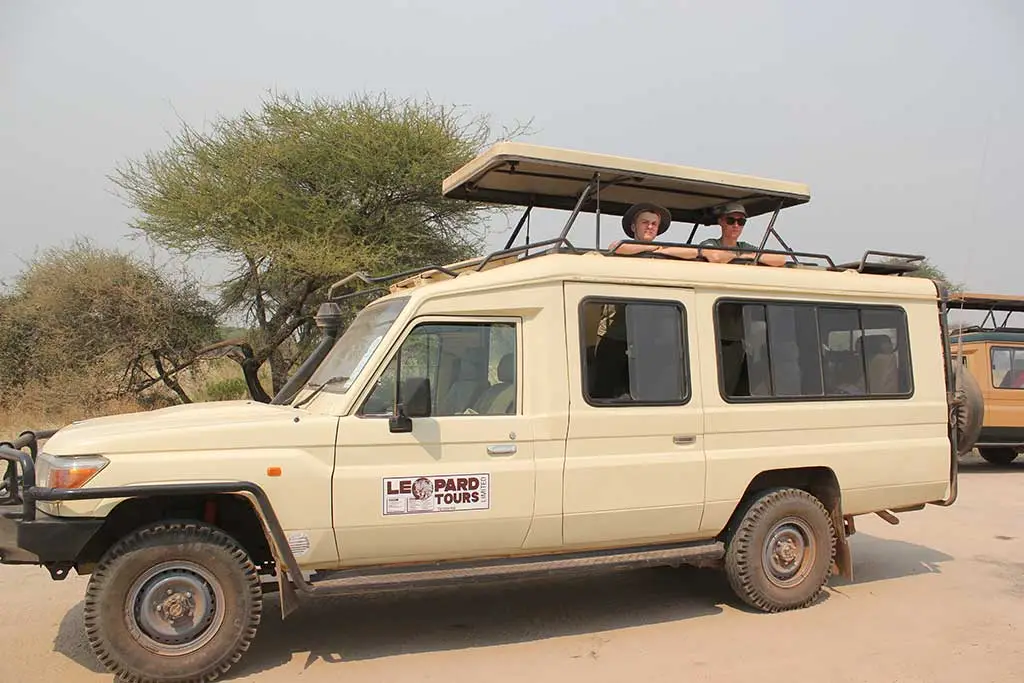
The African Safari: Embarking on Our Safari Adventure
Next day our safari began. We were met by our driver, Peter, and we set off. We had done our due diligence back home about what to bring and had heeded the instructions to pack light and use soft luggage. And we were rewarded with Peter’s very happily surprised approval of our luggage. Peter turned out to be an amazing guide. He was friendly and chatty, without being intrusive, and was willing to answer questions and talk about anything from the animals, birds and plants to national and international politics, language, religion, the local economy and way of life. He spoke English, French and Spanish in addition to Swahili. He often had us singing in the truck. Also, thanks to a misunderstanding on our part, we thought we would be sharing the truck with two more people, but it was private.
Day 1 was a visit of a modern Masai village on the slopes of the Mount Meru (the second highest mountain in Africa) outside Arusha. It’s a full tour to show their way of life. A visit to the medicine woman, who showed us all the different plants she uses and what they are used for, a visit to the school, where a class of 80 students, around 10 years old, sang a song for us and asked us a few questions. At the end, we went back to the home of the village leader and were served a lovely traditional lunch of meat, root vegetables and ugali. Then we took part in making coffee for everyone, from raw coffee beans! Loosening the outer layer, shelling, roasting, grinding and steeping. Very tasty, too!
Day 2 was the start of the Safari proper. From what Peter called the “Chinese” roads (paved, smooth ride) to the “African” roads (as many potholes as Montréal in the spring). Within minutes of entering Lake Manyara National Park, we had to stop to let about a dozen elephants – including a baby! – cross the road. Needless to say, we were thrilled. Wide-eyed and in awe of these magnificent, calm beasts. This park is quite a jungle, and it occurred to us that neither those who entered the park in the vehicle just before us, nor those who came just after us, got to see what we saw. We felt truly blessed. The rest of the day continued with one new sighted animal after another. Because it was thick jungle, it was like a game, trying to spot animals. Peter sometimes thought our excitement was quite funny, since he knew we would, for instance, see thousands of the monkeys that we kept pointing at as we joyfully exclaimed. That day was also our first sighting of giraffes. It’s shocking how tiring it was to be driven around in a safari truck all day. I think it was the wonder of seeing this incredible landscape, flora and fauna, the excitement of capturing some of it in photos or videos, the anticipation as we looked eagerly, trying to cover 360 degrees. We certainly slept well every night.
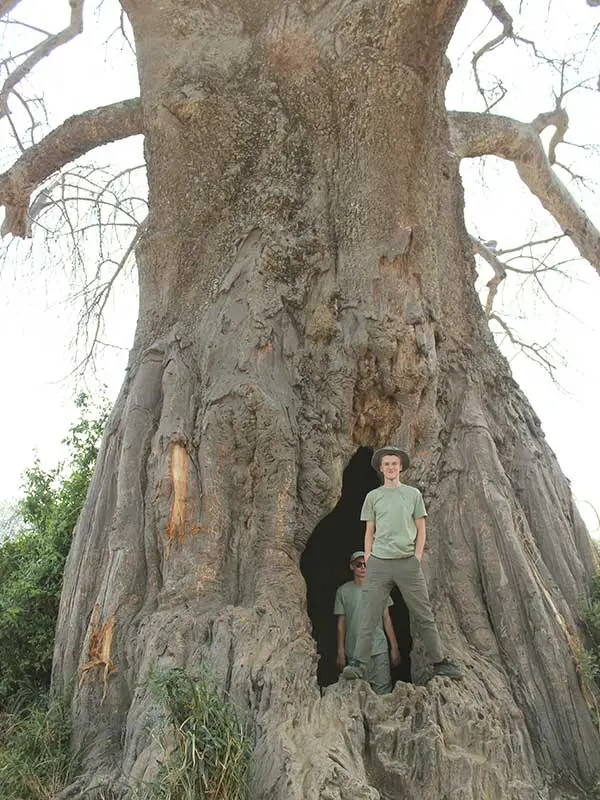
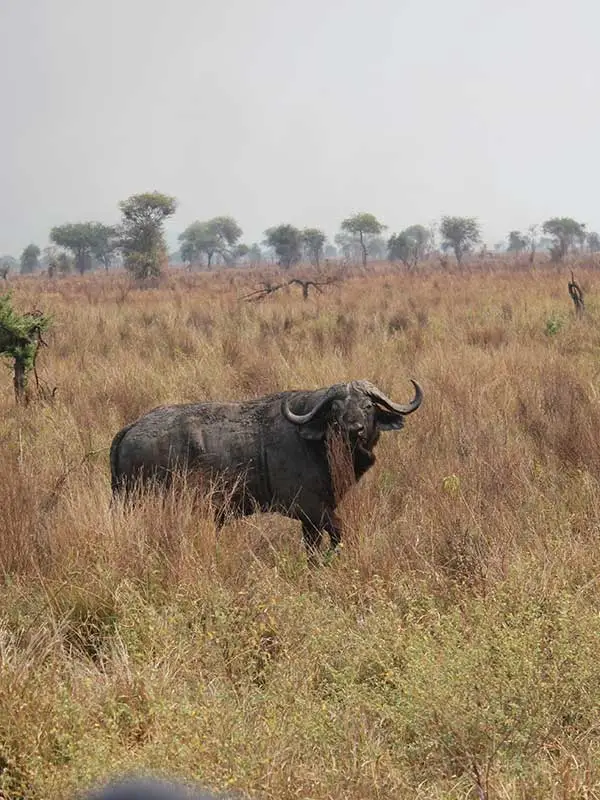
Exploring the Serengeti: From History to Iconic Wildlife
The next day, we drove to the Serengeti, stopping at the Olduvai gorge. Just those names themselves sent shivers up and down my spine. The stories of the incredible discoveries made and what they meant elevated to myth status. The songs that elicit that awe of what this continent is in terms of human evolution. The footage of animal migrations seen on so many different screens. And here it all was, right in front of us. And every bit as exciting as I had anticipated. The Olduvai Gorge Museum was excellent, and standing looking out at the vast excavation landscape was breathtaking.
We were two nights in the Serengeti, which meant a full day in addition to the day entering the park and the day leaving. A completely different landscape from Lake Manyara. While Manyara was lush jungle, the Serengeti is a vast undulating plain, quite arid, with acacia and baobab standing out against the sky. All tones of brown, ochre, yellow, where the wild cats are well camouflaged. The yellow-barked acacia was a tree that captured my attention many times. Something about the shade and brightness of that yellow and the play of sun and shade created by the leaves and branches – it was like happiness growing out of the ground.
The morning of our full day in the Serengeti, just minutes into our drive, we were stopped by a fascinating scene. The kill had taken place, and there was a cheetah moving around the dead animal (likely killed by a lion in the night or at dawn). In the distance were hyenas, coming in a little closer, then backing off again, waiting their turn. Once the cheetah left, the hyenas came in. One walked off with a leg in its mouth (that’s when we realized the victim was a zebra) and another with the tail. Fascinating.
The grazers were delightful. We tried to keep the different types straight – Thompson’s gazelle, Grant’s gazelle, dik-dik, gnu, topi, impala, eland, hartebeest, wildebeest. I had a particular fondness for the zebras, mostly just standing still, seeming totally unconcerned with anything.
The birds were also beautiful, from small songbirds, to large waders, to vultures, some reminiscent of birds at home, others completely different.
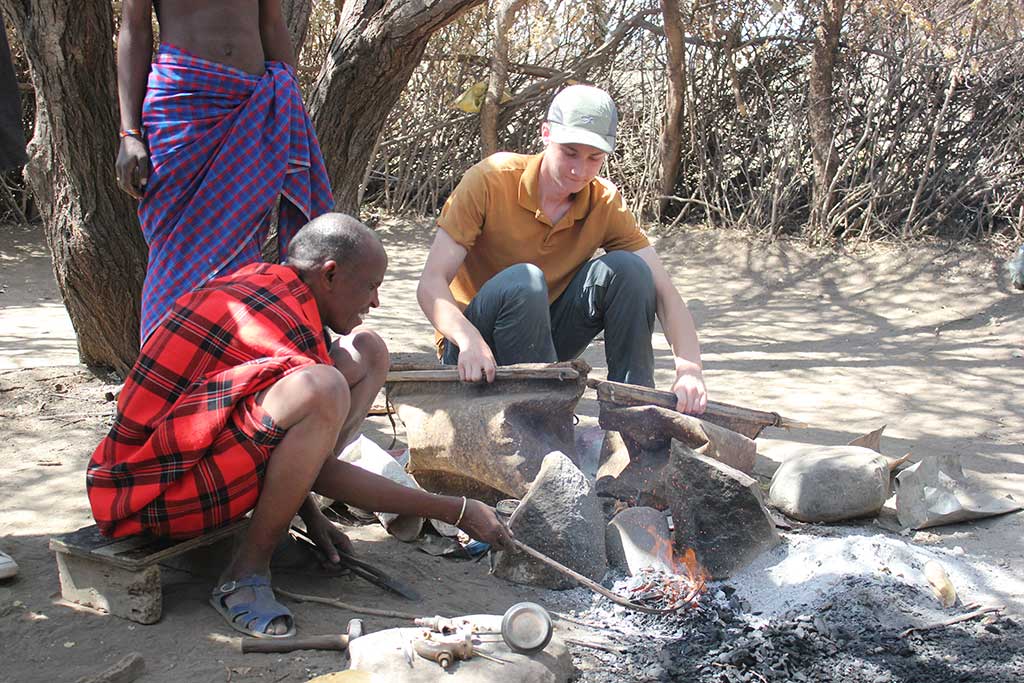
The Ngorongoro Crater, Africa’s Untouched Eden
The Ngorongoro Crater Nature Reserve is almost beyond description. An 8000 square kilometre plain that is the crater what was once the largest mountain on the continent, it is surrounded by mountains in a more or less circular shape. Religion aside, you really feel like you have arrived in paradise. It is full of lush vegetation that bring to mind description and depictions of the Garden of Eden. It feels as though it had been undisturbed for millennia and has a serenity to it. Mind you, we just missed a pack of hyenas surrounding and closing in on some grazers, and my view may have changed somewhat had I witnessed that tension. But it would not have altered the feeling that this place was unharmed by humans, with life going on as biology dictates.
I wish I had some knowledge of trees and could name and describe them better, as they were also spectacular, again, some reminiscent of home, but many gloriously different. I could not get enough of the baobab (think Le Petit Prince) and the yellow acacia, which seemed to shine from within when in the sunlight.
One of the days we spent visiting villages of bushmen from the Tadoga and Hadzabe tribes. The Hadzabe bushmen, in particular, gave us an enlightening tour. You have to wonder how much is put on for tourists, and whether they enjoy us or hate us, but the leader of this particular group was incredibly entertaining and we were happy to go along. They speak a click language, and, with apparently no common language between us, he tried to get us to repeat some names, and very successfully told us about the hunting they do, using sounds and gestures. We went on a small hunt with three of them, during which they shot a small bird with their bows and arrows. After retrieving the bird, they built a fire (with no aids), plucked, roasted and ate the bird. Later, we all got to try shooting arrows. The boys, of course, did quite well.
We also visited some Tadoga blacksmiths, who melted down some scrap copper over their fire and shaped it into a lovely bracelet. A little further along, we met the six wives of a Tadoga herder. He himself was off with the herd, and the women, ranging in age from around 20 to around 60, with children of all ages, explained aspects of their life to us. They sang us a song and asked us to sing one to them. We sang “You are my sunshine.” I was able to use my very limited Swahili here to tell them their children were beautiful.
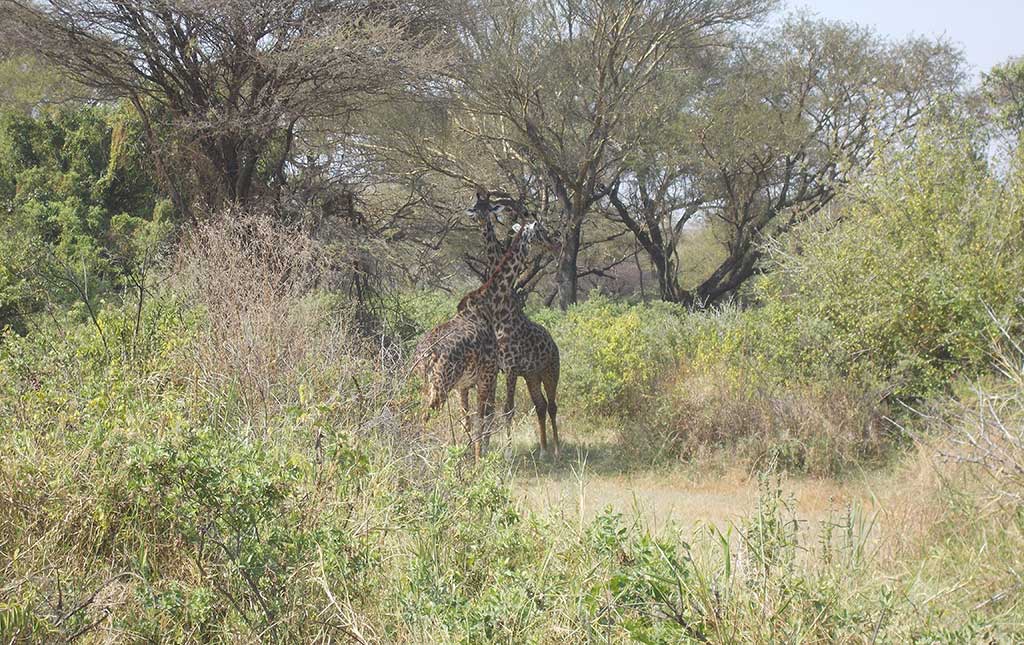
Wildlife Encounters and Our Lodging in Tarangire
The next (and last) two days were back to wildlife as we headed to Tarangire National Park. We were not disappointed. The first coup of the day was spotting (!) a leopard. I don’t know whether there are places where they are more common, but here, it was a rare find. Peter was very excited, exclaiming “and I found him!” and he’s been guiding safari tours for over 20 years, so that told us something. We got some decent footage, and as we were the first to find him, it felt very special.
But for me, who likes the zebras, we also saw another spectacular sight. Dozens, maybe hundreds, of zebras, galloping towards, and then into a marshy pond. Elephants were on hand too, with some younger ones rolling around and playing in the water.
A bit later, a show of a different kind, as a lioness slowly “courted” a lion. We watched them for probably half an hour, as she got near, they both stayed still, then he wandered off. This happened repeatedly, always slowly and seemingly nonchalantly, until they were out of our sight. Perhaps our vehicle was impeding their progress and they wanted to be rid of us. Interestingly, there were giraffes and zebras not far off. Many of them were facing the lions, keeping an eye on them, but otherwise holding their ground. The accommodations throughout were luxurious. The one in the Serengeti had the fewest amenities and was our favourite. A so-called “tented” accommodation, yes, they were tents, but on a frame such that it was much like any hotel room, with a giant bed with mosquito net, night tables, hanging space for clothes, and plumbing for toilet and sink. If you wanted to shower, you had to let them know a bit in advance, so they could mix (hot and cold) water to get the right temperature, then hoist it up to provide flow for the shower. Another so-called “tented” lodge was more like cabins on stilts, which looked out onto the park. In our first half hour, while we were getting settled, we saw elephants ambling along not far in front of the cabins. This one also had an infinity pool with the same view as the cabins. The buffet-style food in most of the accommodations was very good and offered enough variety to create choices that appealed to everyone in our group.
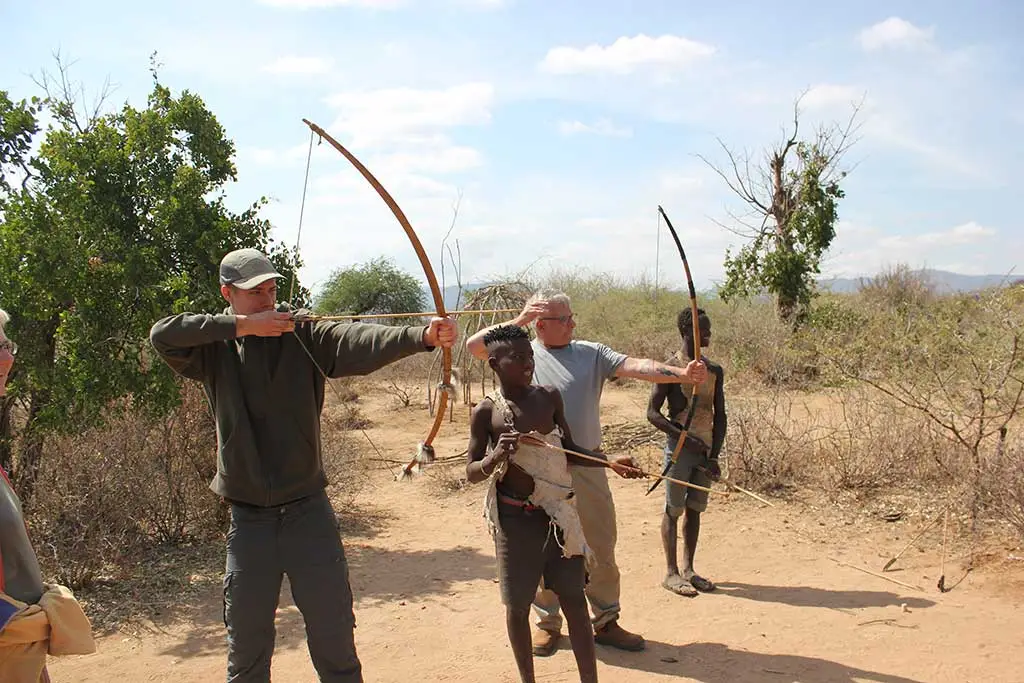
Reflecting on Our Unforgettable Safari Experience
The safari truly was a trip of a lifetime. The boys were a good age – old enough that they will not forget it and could appreciate all facets, young enough to be awed many times (mind you, I think at any age, a first safari will result in awe – it certainly did for us, the parents).
Misgivings? Individual sized bottles of water. I have since read up on this issue and not found any way around it. Apparently, it is just part of tourism in less developed countries. I had brought purifying tablets, but in the end, I was too scared to try them. And even with the care we took, three of the four of us got some version of traveller’s diarrhea at some point. I also found the lushness of at least one of the accommodations distressing. It was a gated place, but were told it was quite safe to leave to go for a walk, so we did, just to a small local grocery store for a couple of things. But the contrast between “within” and “without” was striking, to say the least. Within the resort, there were plants of all descriptions, well-maintained beautiful greenery, and a pool. Beyond the gates, it was arid and dusty, and I felt guilt about what I perceived to be the senselessness of using all that water for this resort in a clearly water-poor area.
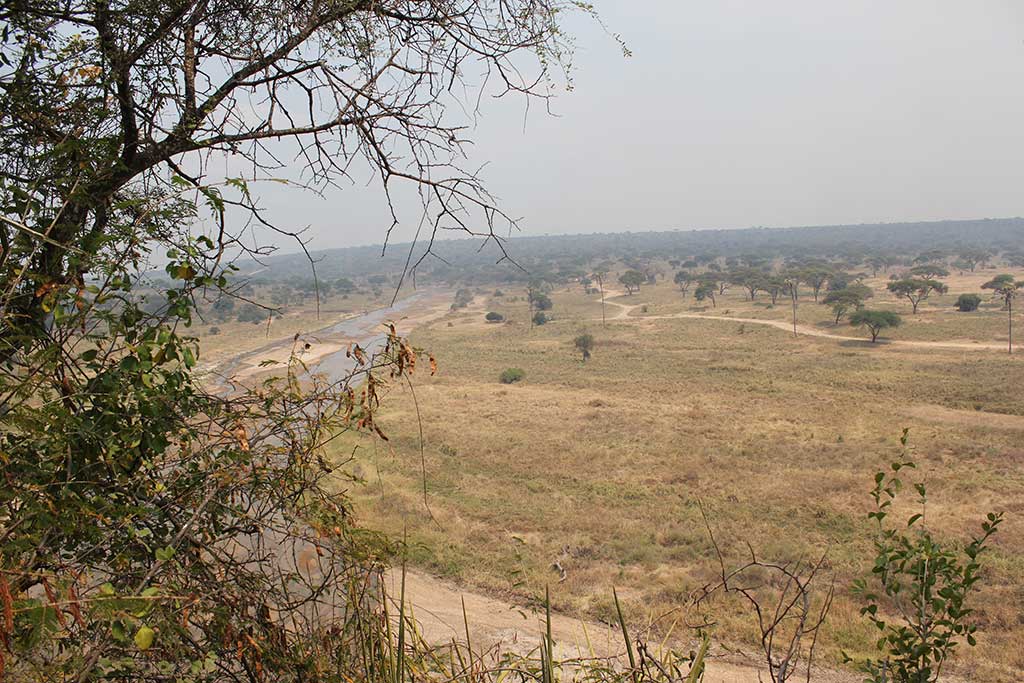
Relaxing in Zanzibar: The Perfect Post-Safari Experience
To round off the safari, we spent three nights (two days) in Zanzibar, where we stayed in a beach-front hotel in Stonetown. The hotel itself had some Turkish influence in its design, with lovely antique furniture in the hallways and beautifully tiled bathrooms. We took a guided walking tour and learned that Zanzibar has Arabic, Indian and British influences in addition to its original African. Stonetown is of course the tourist area, and quite “done up”, but the architecture is amazing, with ornate doorways whose decorations indicate, for instance, that the once-upon-a-time owner was a slave trader. Whitewashed walls, narrow streets, little squares where people gather. The ground floor of every building was a tourist shop or other, selling the usual souvenirs, but I went for a walk early one morning, before they had opened, and saw a different town, with children heading for school in groups of two or three, or being driven on the back of a small motorcycle.
There is a museum about the slave trade that has some of the most moving (and difficult) writing I have ever seen.
For Loïc’s birthday, we hired a small boat and went snorkeling. The water had that teal blue colour that I love, and the sun was shining. There was not tons to see, but the boys didn’t know any better and enjoyed every fish, rock, shell and urchin that they found 10 or 20 feet below the surface.
And then it was time to leave. The trip home was smooth and uneventful. And the memories will last a lifetime.
Interested in a Safari? Contact Henry at Talk of the Town Travel at 416-960-1393 or info@talkofthetowntravel.com. For more information on specific safaris, including Kenya, Tanzania and more, check out our safari page.

